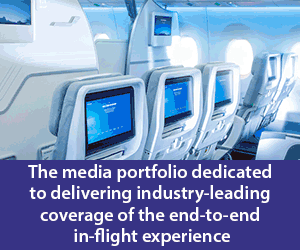It felt like it would never come, but the first vestiges of light at the end of the tunnel are being glimpsed.
Although travel restrictions remain in place across many countries, some governments have eased these curbs, and passenger flights have resumed.
For example, from 21 May, Emirates reintroduced flights to nine destinations, covering North America, Europe and Australia. All Emirates aircraft will go through enhanced cleaning and disinfection processes in Dubai, after each journey.
To facilitate such flight operations, the airline has modified its in-flight product and service offering on these routes. Onboard Wi-Fi is available for purchase only. In-flight retail as well as magazines and other printed reading material will not be available. Food and beverages continue to be offered onboard, but with packaging, content and presentation modified to reduce contact during the meal service and cut the risk of infection.
Elsewhere, its Middle Eastern rival, Etihad Airways will introduce 20 routes connecting via Abu Dhabi from 10 June, with passengers and crew benefiting from the carrier’s new Etihad Wellness programme.
In Europe, easyJet intends to resume flights to approximately 75% of its route network by August, with 50% initiated in July. UK-only flights will resume from 15 June. Initially, there will be no food service onboard flights. In Turkey, Pegasus Airlines has relaunched domestic flights to 27 destinations.
All good news, which adds to figures showing that daily flight totals rose 30% between 21 April and 27 May, albeit off a very low base.
“April was a disaster for aviation as air travel almost entirely stopped. But April may also represent the nadir of the crisis. Flight numbers are increasing. Countries are beginning to lift mobility restrictions. And business confidence is showing improvement in key markets such as China, Germany, and the US. These are positive signs as we start to rebuild the industry from a standstill. The initial green shoots will take time – possibly years – to mature,” said Alexandre de Juniac, IATA’s Director General and CEO.
A new travel normal is beginning to be adopted: Compulsory face coverings; an absence of in-flight catering or a reduced service at least; limited IFEC services; and a change to boarding and disembarkation. Some airlines, such as Delta, are continuing to block seats, either middle or aisle. On routes where increasing customer demand is driving flight loads closer to Delta’s capacities, it is looking for opportunities to upsize to a larger aircraft type or add more flying.
As the US airline’s Chief Customer Experience Officer Bill Lentsch comments, “Delta is offering the highest standards in safety and cleanliness, so we’re ready for customers when they’re ready to fly again.”
The real test will not be enticing passengers back to fly, but the longer-term goal of retaining that enthusiasm and commitment.






